Varieties and features of horse running
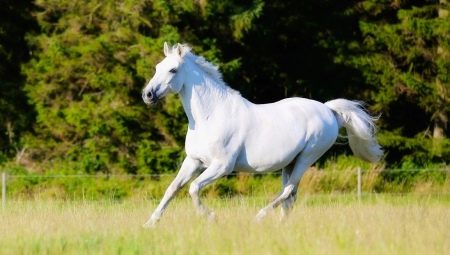
One of the most beautiful and graceful spectacles is the running of a horse. In another way, the way these beautiful animals move is called the gait. Horses perform a large number of different movements while running. Any rider, even if he is a beginner and does not have much experience, should know exactly what methods of movement of horses exist. This is very important, because depending on the specific action of the horse, the rider has to make different efforts.
Varieties of gaits
There are several types of gaits. All of them are subdivided into artificial and natural. The natural group includes the methods of moving the animal, which are characteristic of absolutely all horses. This includes the direct styles of the horse's move, which are given to him by nature from birth. In this case, it means:
- step;
- Lynx;
- gallop;
- amble.
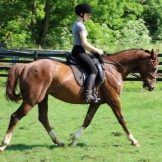
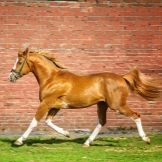
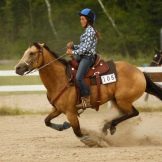
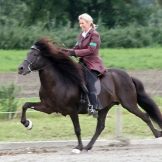
It is necessary to take into account the fact that some horses are originally born as pacers. Other individuals have to be taught this move separately.
As for the artificial varieties of the gait, horses master them through regular training. Most often, such options are addressed in the circus arts or in competitions. It is customary to refer to this group the following movements of horses:
- passage;
- piaffe;
- Spanish step;
- gallop on 3 legs;
- reverse canter.

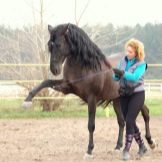
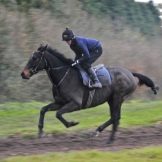
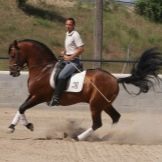
Now let's get acquainted with different types of gaits in more detail.
Natural
Step
This gait of horses is as slow as possible in comparison with other movements. This is a special four-stroke gait. It differs in that it does not provide for a suspension phase. Simply put, moving at a walk, the horse simply rearranges its hooves in sequence. Moreover, the speed of its movement is usually no more than 7.5–8 km / h.
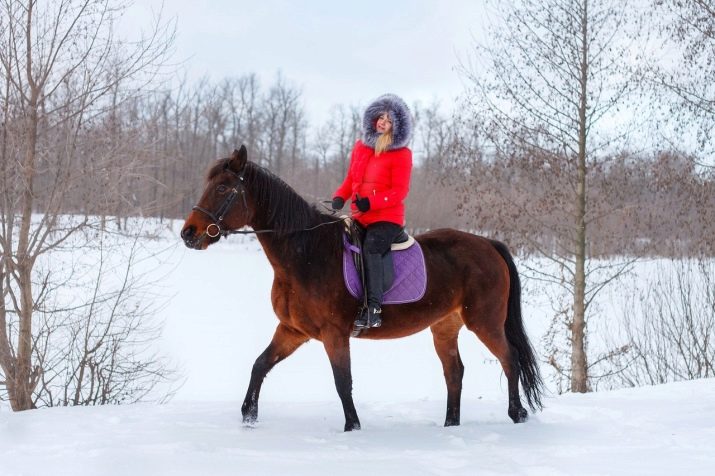
There are several variations of the step:
- short;
- average;
- added.
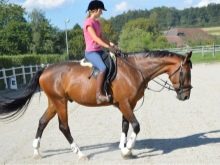
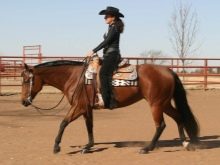
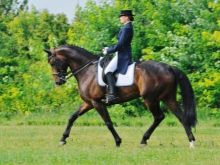
All of the listed types of step differ from each other in distance, which is observed between the front and hind limbs of the animal. In the case of the short stride, the footprints left by the hind feet are located at an impressive distance from the footprints left by the front feet.
If the horse moves in accordance with the average stride, then its hind legs will always catch up with the front legs. All limbs will be kept at approximately the same level.
If we are talking about the third type of step - added - then here the traces left by the horse's hind hooves will go ahead of the front ones by literally a few centimeters.
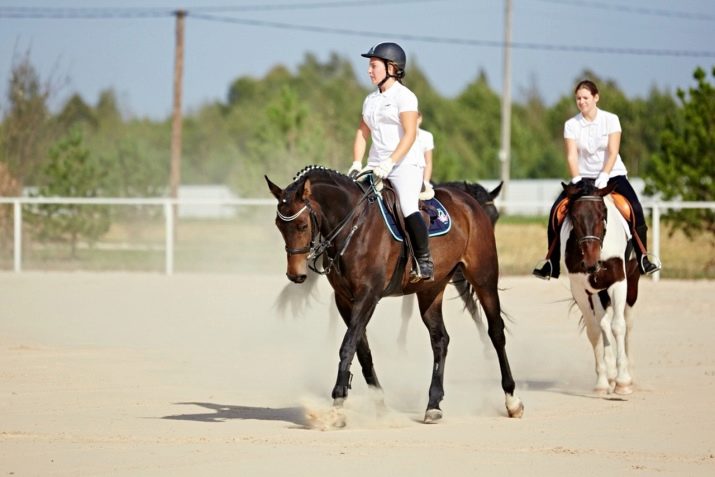
Lynx
This is the horse's gait, which is a two-act movement. Usually beginners master it only after familiarizing themselves with the usual step. The trot is characterized by a more impressive speed of movement of the horse. Novice riders who do not have rich experience consider this type of running to be one of the most difficult to learn, because it provides for a phase in which the animal hangs in the air. At this moment, all her hooves are lifted off the surface of the ground or asphalt.
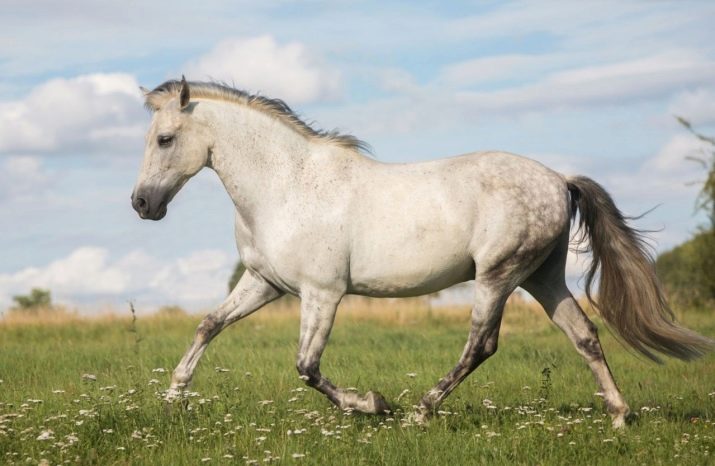
A horse that is trotting will simultaneously lower its left front and right hind legs. After that, the animal hovers briefly in the air, and then steps on the remaining hooves. At this point, two distinct blows are usually heard. So as not to feel discomfort in the saddle during such a run, the rider needs to move in time with the horse, jumping a little when hovering.
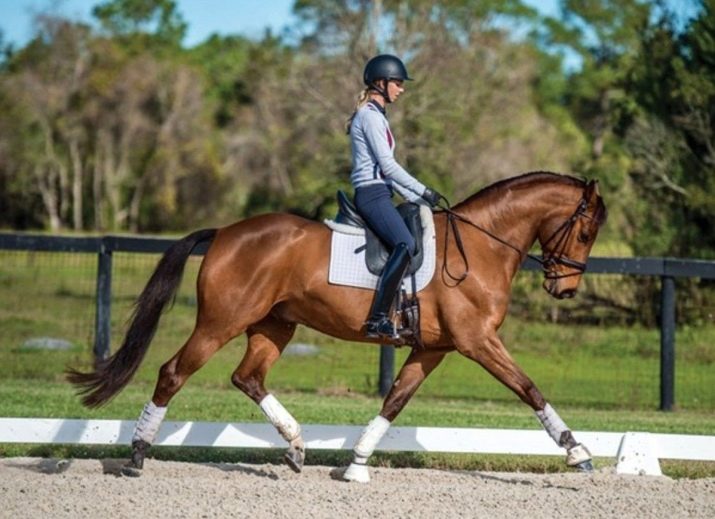
The lynx is classified into several distinct types:
- collected;
- medium;
- added;
- working.

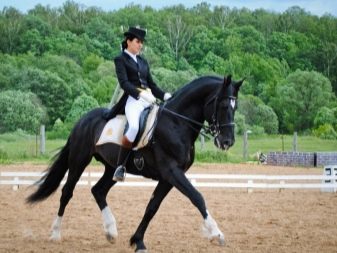
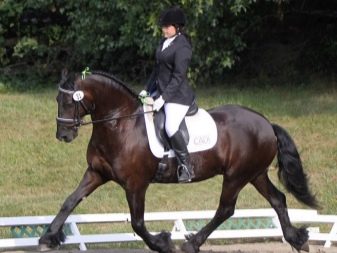
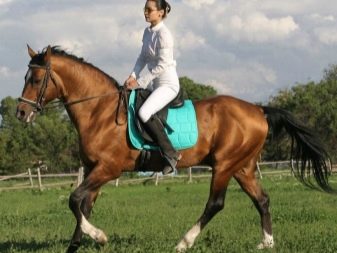
Gallop
This step was recognized as the fastest. It is customary to refer to it as a three-act gait. Young riders are most frightened by this type of horse movement, and there is a completely expected explanation for this, because an animal rushing at a breakneck speed may seem completely uncontrollable. It is almost impossible to cope with such a colossus, so justified fear envelops people. In fact, the rider will tolerate this type of stride much more easily than trotting strides. The main thing in this business is to learn how to stay perfectly in the saddle.
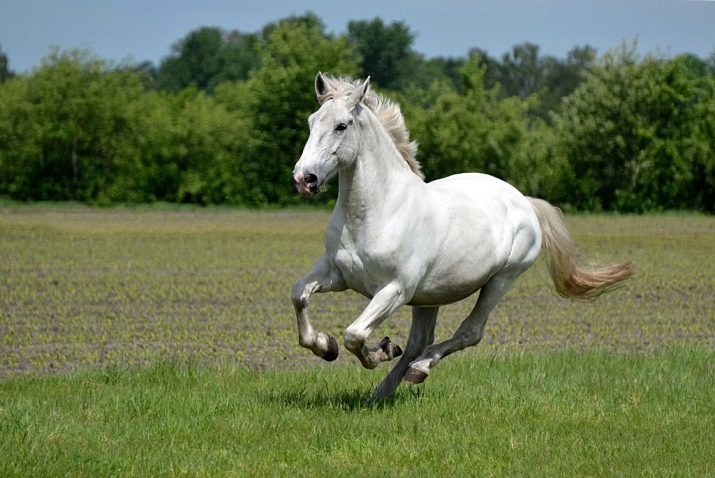
When horses run at a gallop, they usually hear 3 hoof strikes on the ground. The running horse first brings forward one hind limb, and then the second in a pair with the front parallel to it. Then the animal lowers down the second front hoof. Next comes the short freeze phase. In the future, this cycle is repeated.

The gallop, like the rest of the horse moves, is divided into a number of subspecies:
- assembled (is one of the slowest variants of a three-act run - 200 m / min.);
- arena (with this type of gallop, the horse overcomes 300 m in one minute);
- average (in this type of gallop, the horse runs from 400 to 700 m / min.);
- sweep (in this case, the horse usually develops a speed of no more than 800 m / min.);
- career (this is the most frisky and impetuous type of gallop, in which the horse develops about 1 km / min.).
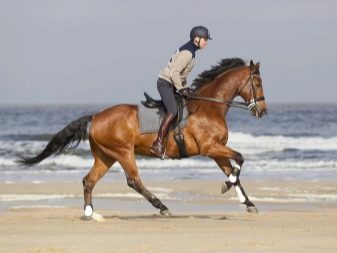
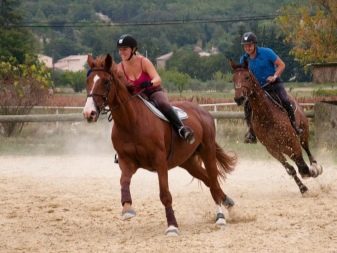

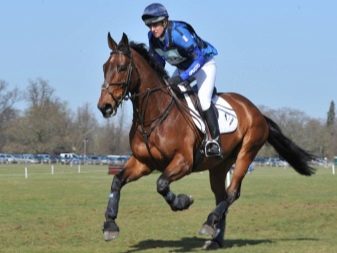
Amble
Amble is another way to move horses. It is a cross between a trot and a gallop. The main distinguishing feature of this type of horse running is that with him, the animal takes turns rearranging the hooves. Moreover, they are located only on one side of the case, and not diagonally.
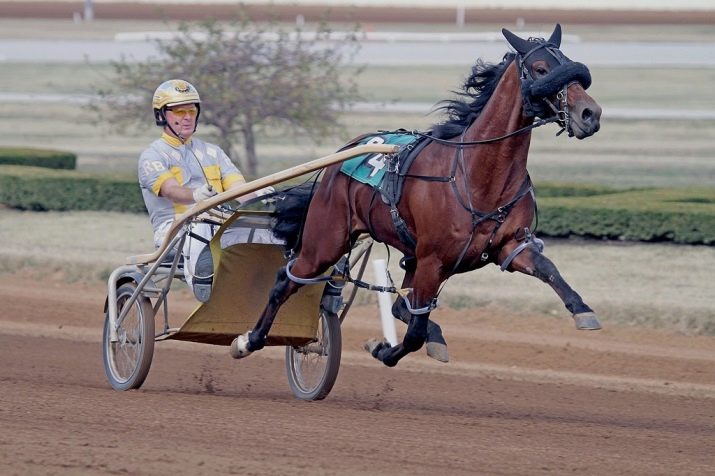
It should be noted that pacers are valued especially highly, because their usual manner of movement is as comfortable and optimal as possible for riders. In the process of running, unnecessary shaking and inconvenience is practically not noted. Amble is characteristic of certain breeds. It can be passed on to offspring by inheritance from parents.The indicated valuable manner of movement of horses will turn out to be developed artificially, by correctly and regularly training the horse.
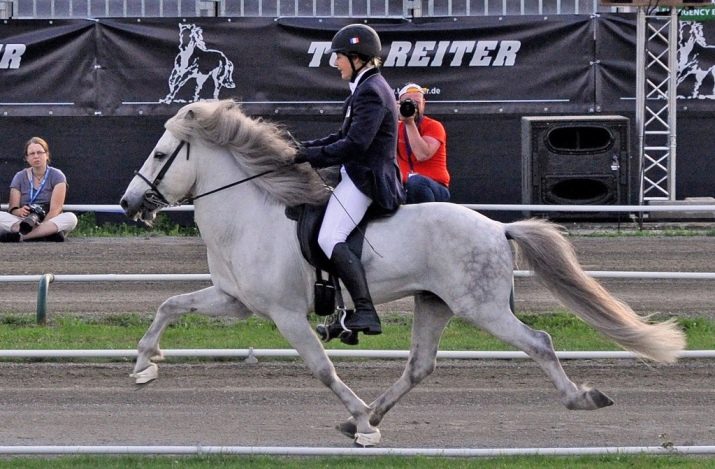
These types of horse movement can also be attributed to natural gaits.
- Telt. Typical for Icelandic horses. With it, the horse rearranges its legs in the same way as with an ordinary step, but moves at this time much faster. It should be noted that the rider with such a gait feels very comfortable and calm, since there is no excessive shaking.
- Paso Fino. This is the name of a rather playful, but small step of an animal.
- Marsha. This is one of the types of amble. It can be demonstrated by some of the horse breeds that live in Brazil. For these individuals, this type of running is natural and is transmitted at the genetic level. The marching paces of pikada, cambric and trotada are characterized by smooth movements, which makes them especially valuable.

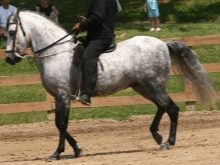
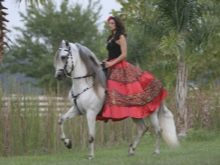
Artificial gaits
Passage
This is a form of gait that was formed on the basis of the trot. However, during the passage, the horse's movement is more precise and graceful. At the same time, in addition to demonstrating the gait itself, the horse simultaneously repels itself from the ground with its hind legs, lifting them high enough.
To teach an animal to pass, requires long and persistent training. In this case, proper physical fitness plays an important role.
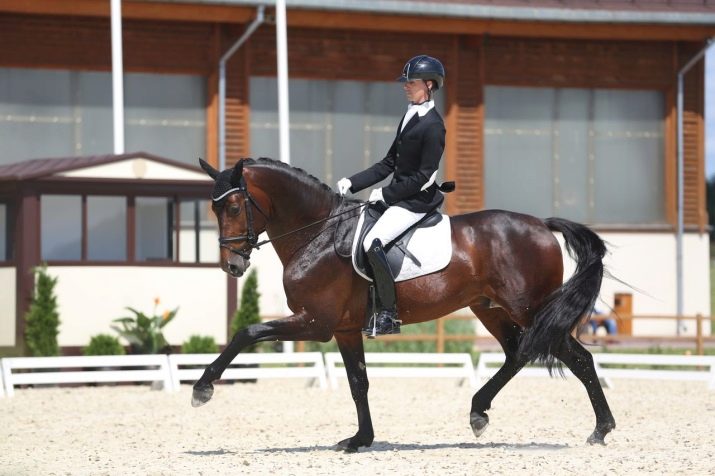
Piaffe
The piaffe gait may differ from the passage described above in that the suspension phase in it is longer. In this case, the hind hooves of the horse at the moment of jumping should be bent under the body, the croup drops, and the back muscles are very tense. Because of these characteristics, the rider will experience a pronounced vibration as the animal runs.
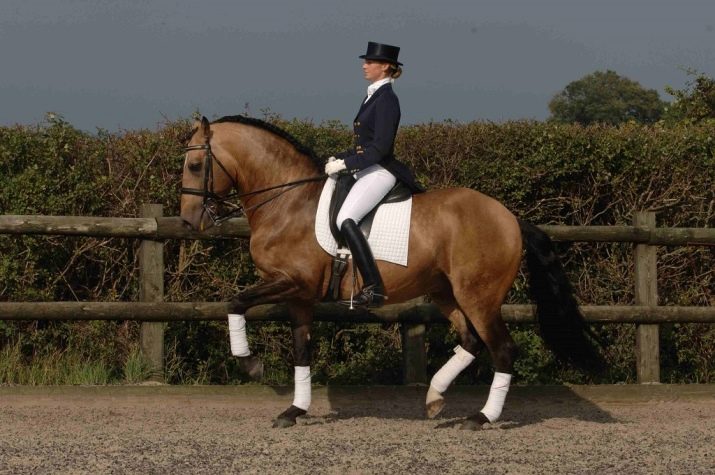
Spanish step
In a high school of riding, this gait is the most important and highest class. The Spanish stride involves alternating high lift of straight front hooves. During this time, the hind hooves move in a normal manner. The degree of mastery and skills of the rider and the stallion in this case are assessed not only by noticeable signs, but also by the degree of noise emitted - a properly trained horse will move with a Spanish step as quietly as possible.
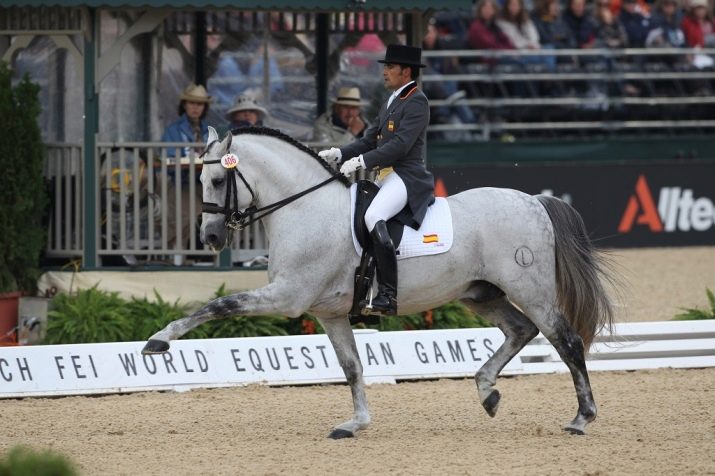
Artificial varieties of gallop
The three hoof gallop is an unusual form of horse running. In this case, the horse moves using only three legs. One forefoot always remains slightly raised as it travels. It should not touch the ground. There is also a special reverse canter. With him, the horse moves back. This type of gait is often shown in circus arenas.
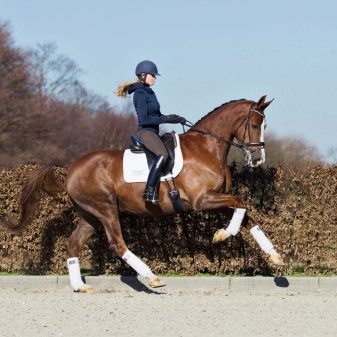
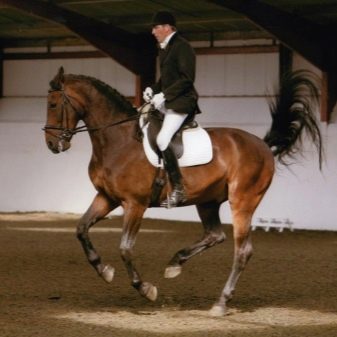
Helpful hints and tips
If a rider wants to successfully and productively interact with a horse, he needs to feel very well the tact of his movements, skillfully adapt to it. In this case, you need to monitor the position of your own body and do not forget to keep the correct posture.
The Spanish step is not the easiest gait. To teach him a horse, it is very important to understand its psyche, as well as to have a strong psychological connection with it. The animal must be sure to trust its rider, otherwise the training will not lead to the desired results.
It should be borne in mind that the fastest and most impetuous are only high-quality purebred horses. Their gallop speed can range from 66 to 96 km / h.
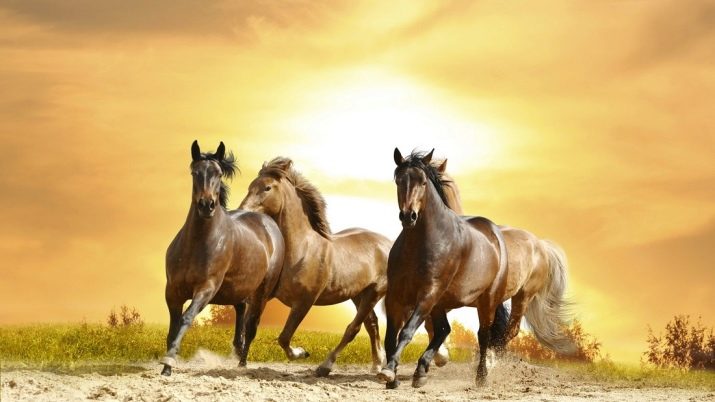
It should be borne in mind that amble horses are the most valuable animals. They easily cover impressive distances. However, one should not expect great maneuverability from such horses - it is very difficult for them.
You need to know that Extended trot is an anaerobic gait. It is noted that for a long time in this way the horse simply will not be able to run - it will inevitably begin to choke.
If the horse is working at reasonably fast gaits in harness or under saddle, it is advisable to periodically change the gait. Due to such actions, the animal will get tired much less.

There are many more different types of gait of horses, for example, predatory, feline, canter, one-sided (in which movements are made with one side) and many others. The pace and nature of the move are also different - it can be either rapid, expressed in leaps, or unhurried, unhurried. It is necessary to train an animal in new types of running, and at the same time to learn the necessary techniques themselves, under the supervision of professionals in the conditions of equestrian clubs.
If you follow all the instructors' advice and build trust with the horse, the result will be easy and productive training.
You can also watch the video below for gaits.








